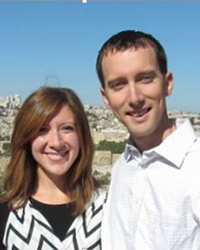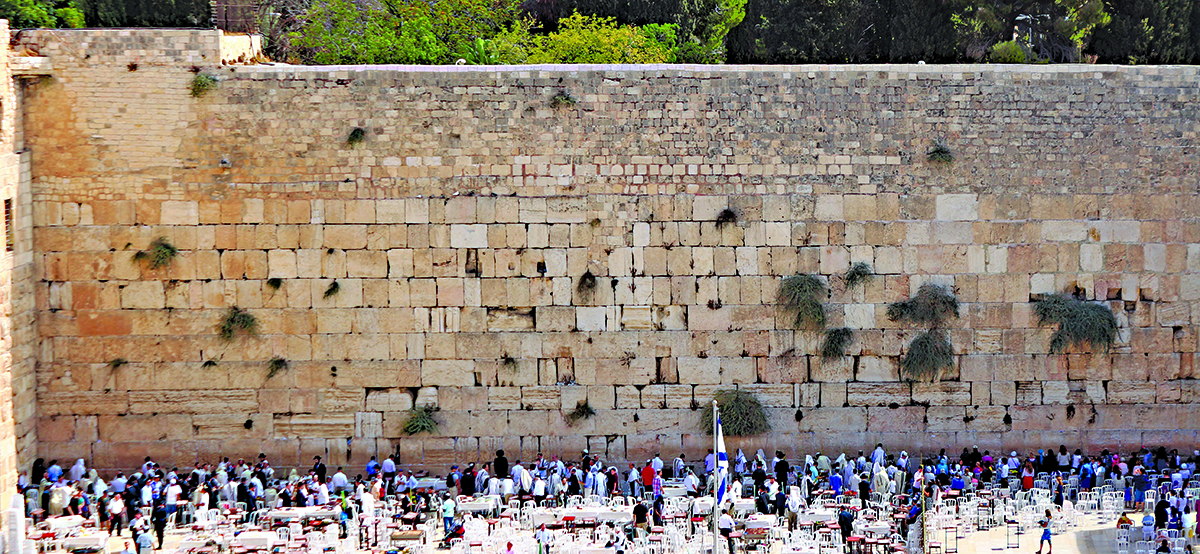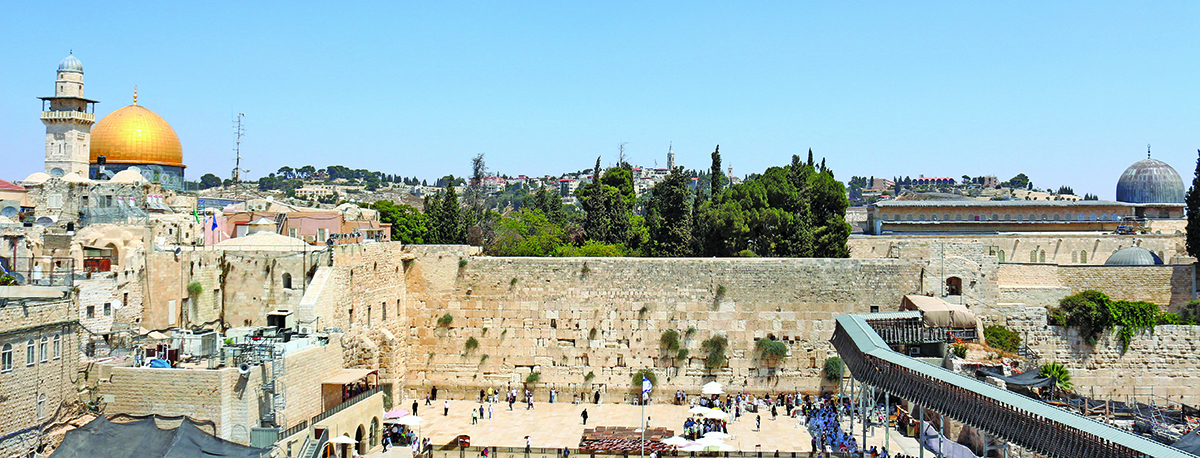

by Trent and Rebekah Dutton
Synopsis: The Western Wall of the Temple Mount in Jerusalem is a symbol of Jewish heritage and a building block of biblical archaeology.
The Western Wall is the foremost symbol of Jewish religion and culture. This object is so ubiquitous in the Jerusalem landscape that many are aware of its existence, but not its historical function, its transition to a venerated relic, and significance in a modern Christian context.
What is it? The Western Wall is, first and foremost, merely a retaining wall. It is the western extent of the monumental Temple Mount platform centered in Jerusalem that once served as the base for God’s holy temple structure. This platform was built by Herod the Great during the Roman period to both show and curry favor with the Jews, a scheme of political manipulation. Refurbishing the temple in Herodian style allowed magnificence and grandeur without introducing biblically prohibited items. Shrewdly, it also allowed Herod to claim the God of the Jews had blessed him with “kingship,” and this was part of Herod’s virtuous acknowledgment of the appointment (Josephus, Antiquities 15.11.6).
Why all the significance and fame over history, up to modern-day, for a retaining wall? It is the last vestige of Solomon’s temple, which became the intermediate temple, which was then refurbished in the first centuries BC and AD.
This history makes the temple and the platform that supported it a substantial building block of biblical archaeology—both metaphorically and literally. Seriously, these are some big blocks, or ashlars, in archaeological lingo. The largest known of the retaining wall stones is approximately 44 feet long, 10 feet high, and according to ground-penetrating radar estimates, 6-8 feet thick. Their estimated weight is 200 tons (Ritmeyer, 52).
The temple is prominent in both Old and New Testament history, as it was the physical location for God’s dwelling place on earth, after the use of the portable tabernacle ceased. When the narrative of the Old Testament settles His presence in Jerusalem, the temple location forever perpetuates Jerusalem as the religious base of the Jewish nation. Consequently, it also became the central location for the rise of Christianity, since this is where the Jews were gathered to celebrate Pentecost on that faithful day in Acts 2. The large ashlar stones of the Temple Mount base provide a reminder for what was there before, which solidly survives today. While the temple was destroyed in AD 70, and many of the surrounding structures leveled, the platform on which it stood is nearly indestructible.
The wall’s modern-day significance to the Jewish culture spans the Diaspora and the return of the Jews to Jerusalem. The wall fell under Jordanian control after the 1948 Arab-Israeli war, when Jordan occupied the eastern portion of the city. This ended when Israel regained control of east Jerusalem after the 1967 Arab-Israeli Six-Day War. Iconic images from that event show the first Israeli paratroopers reaching the wall and weeping over the loss of comrades as well as the retaking of the wall.
For modern-day Christians, the Western Wall is an anchor to both Old and New Testament connections of the Temple Mount. The mount, supported by the Western Wall, ties to the history of kings David and Solomon, particularly with Solomon and his temple. From a New Testament perspective, the activities of Christ centered around Jerusalem and the temple, and it is the catalyst for the establishment of the church. Just around the corner from the Western Wall are the steps accessing the southern entrances of the Temple Mount. In this area, Jesus and the disciples would have entered, exited, and socialized. His cleansing of the temple, teaching, and healing (Matt. 21), along with the apostolic teaching on Pentecost, and the subsequent arrest of Peter and John in the temple (Acts 2-4) are just a handful of many New Testament references to this area. These biblical references to the temple, along with many others, suggest the significance of this wall that provided platform support for God’s holy temple.
Josephus, Flavius, and William Whiston. The Complete Works. Nashville: Thomas Nelson Publishers, 1998.
Ritmeyer, Leen, and Kathleen Ritmeyer. Jerusalem, The Temple Mount. Jerusalem: Carta, 2015.
Author Bio: Trent and Rebekah Dutton both hold Master’s degrees in Biblical Archaeology from Wheaton College, in the Chicago, IL area. They have participated in four full excavation seasons with The Leon Levy Expedition to Ashkelon, two seasons at Tel Shimron in the Jezreel Valley, and one season at Tel Burna in the Shephelah. They can be reached at trentdutton@gmail.com.

Image 1: The Western Wall at Sukkot, the Feast of Tabernacles

Image 2: Overview of the Western Wall. The domed mosques in the top right and left corners rest on the Temple Mount

Image 3: Nighttime shot of the Western Wall at the Jewish New Year

Image 4: Southwestern corner of the Temple Mount, showing the Western Wall on the left